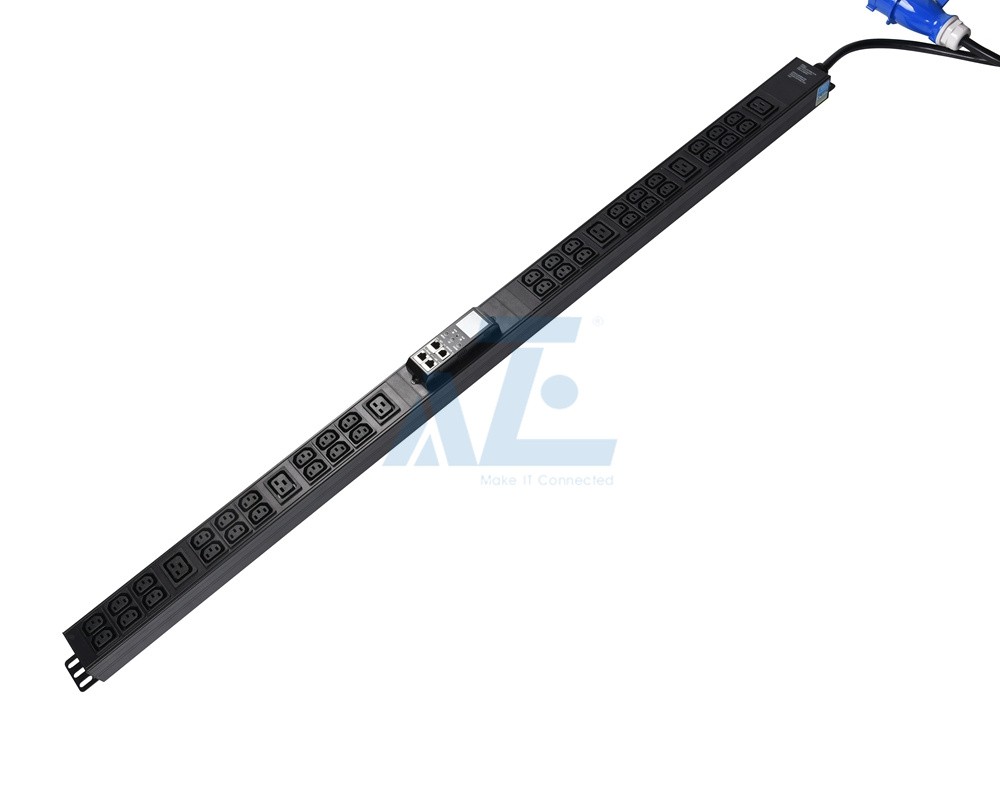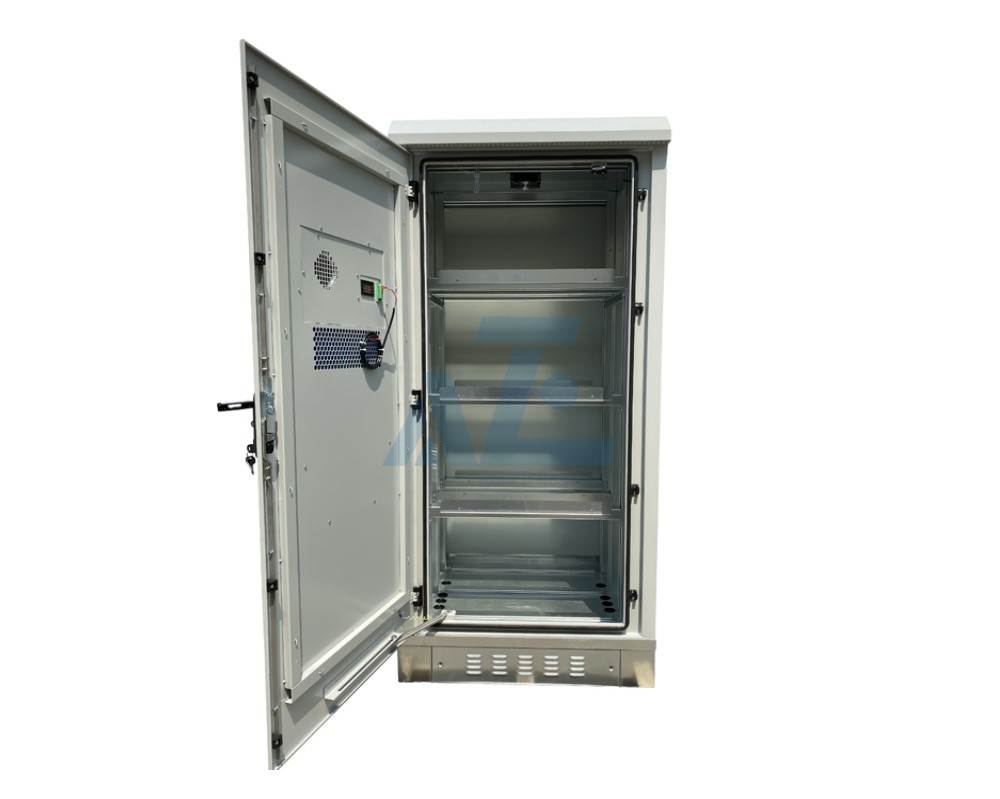How Do You Choose Between the Different Types of PDUs?
How Do You Choose Between the Different Types of PDUs?
May 15 , 2021PDUs come in a variety of styles that provide everything from basic power distribution to enhanced power management and maintenance options.A PDU is a device with multiple outlets designed to distribute electric power to computers or networking equipment within a rack.The two main types of rack PDUs can be classified as either non-intelligent PDUs or intelligent PDUs. Creating the proper configuration for your data center will require you to first understand the key differences between these two types of rack PDUs.
With different types of PDUs from which to choose, it can be a challenge to determine which PDU is best for your rack power design.
Basic PDU
A basic PDU is typically a power strip that accurately distributes the correct voltage and current to multiple outlets within an IT environment. The basic PDU can be used to supply power to IT equipment within racks.It is a dependable, space-saving, cost-effective way to deliver power to wiring closets, server rooms and equipment racks from a UPS system, generator or utility wall outlet. It complements the benefits of a UPS system by adding more outlets than are provided by a UPS to essentially convert a single high-amperage UPS outlet to multiple low-amperage PDU outlets. A basic PDU is the easiest way to distribute facility UPS or generator power to multiple rack loads.
Monitored PDUs
As its name suggests, a monitored PDU visually displays the current electric information. It is important to note that in non-intelligent rack PDU, the display information can only be viewed locally, and lack remote capabilities.
While similar to a metered PDU, a monitored PDU goes one step further with its ability to remotely monitor single- or three-phase voltage, frequency, and load levels in real-time via a built-in network connection. Output current consumption is displayed locally via a visual meter to warn of potential overloads before critical input sources become overloaded.
Connecting additional equipment to a PDU can overload it or the supply circuit, causing breakers to trip or equipment to fail. Both metered and monitored PDUs display load levels in real-time, allowing additional equipment to be connected safely. The primary input plugs into an On-Line UPS system. The secondary input plugs into a wall outlet. If the UPS system is taken offline for maintenance, repair or replacement, the PDU keeps the load powered by automatically switching from the primary input to the secondary input because of its ATS functionality. When the UPS system is restored, the PDU will switch back to the primary input.
Metered PDU
A metered PDU can locally monitor load level and avoid potential overloads with a built-in digital current meter while offering reliable, rack-mount, multi-outlet, single or three-phase, power distribution from any protected UPS, generator or mains input power source.
Switched PDU
What if you want the ability to remotely monitor, connect or disconnect your data center loads? No problem! A switched PDU provides all of these capabilities. A switched PDU can locally monitor load level and avoid potential overloads with a built-in digital current meter, as well as remotely control individual outlets for the rebooting of locked equipment to avoid costly service calls, custom power-on/power-off sequences and load-shedding of non-essential loads during blackouts to extend battery backup runtime for critical equipment. Unused PDU outlets can be electronically locked off to prevent the connection of unauthorized hardware. Built-in local digital display and remote web/network interface reports detailed voltage, amperage and kilowatt output values per breaker bank / phase with additional reporting options for power unbalance percentage, IP address and optional sensor-based temperature and humidity data. The PDUs network interface connects to an Ethernet jack. Remote users can switch each of the PDUs outlets on or off via SNMP, Web or telnet.
The outlet metered and switched PDU combines all of the capabilities of Switched PDUs, Metered Outlet PDUs, and Metered Input PDUs. It is the most robust type of intelligent rack PDU and can be used to help data centers effectively reduce costs and maximize energy efficiencies across devices.
Hot-Swap PDU
Do you have to take your network offline to repair or replace your UPS? Not if you have a hot-swap PDU! A hot-swap PDU can make any On-Line UPS System hot-swappable. The primary input plugs into an on-line UPS system, and the secondary input plugs into a wall outlet. A hot-swap PDU features dual input power cables to support connection to separate Utility and UPS power sources. During normal operation, the PDU supplies conditioned power from the UPS to connected equipment. A manual transfer switch allows the load to be shifted from the UPS to direct primary power. The UPS may then be powered down and removed from service while connected mission-critical equipment remains powered and operational.
Automatic Transfer Switch(ATS) PDU
What if you want to provide redundant power to your IT equipment yet they are not designed with redundant power supplies? Rather than buy new IT equipment with redundant power supplies, you can get an automatic transfer switch (ATS) PDU, which can provide redundant power sources for devices without them. ATS PDUs eliminate equipment downtime by automatically switching to a secondary power source if the primary source fails or requires maintenance. The dual AC inputs can be connected to two utility sources, two generator sources, two UPS sources or any combination. The primary input plugs into the primary UPS system, which must be an on-line UPS system. The secondary input plugs into the secondary UPS system. Ideally, the UPS systems should be connected to separate circuits. The PDU monitors voltage and frequency, automatically switching to the secondary input if the primary input deviates from the designated operating range (99-138V / 45-65 Hz). ATS functionality is supported by any two compatible AC power sources regardless of phase angle so an ATS PDU can be used in a wide variety of advanced and redundant-power networking applications.
Growing demand for computing power and constraints on physical space have led to even more densely packed rack enclosures. As the number of rack-mounted servers, blade servers, network switches and routers has increased, so has the need for more power in the rack. The ability to deliver this power in the most efficient way while conserving rack space is accomplished by a Power Distribution Unit (PDU).
No matter your goals, our team is ready to help you choose the right type of rack PDUs for data center. Discover how you can reduce costs, increase energy efficiencies, lower carbon footprints, identify idle servers, and achieve a whole host of ROI-enhancing benefits with the right intelligent rack PDU.
Related Products
Related Article
KVM Switches Frequently Asked Questions
Frequently Asked Questions for the KVM switches
Server Rack Enclosure Cabinet Buying Guide
How to select a right server rack cabinet enclosure
What is IP55 Outdoor waterproof Enclosure
What is IP55 Outdoor waterproof or weatherproof electrical Enclosure?
NEMA Outdoor Telecom Enclosures Solutions
NEMA 4,NEMA 4 Rated Outdoor Telecom Enclosures Solutions Provider
Outdoor Cabinet Enclosure Air Conditioner
Outdoor cabinet air conditioners keep your equipment cool outside
How to Choose Singlemode or Multimode Fiber Cable
Fiber Optic Cable Types: Singlemode vs Multimode Fiber Cable











